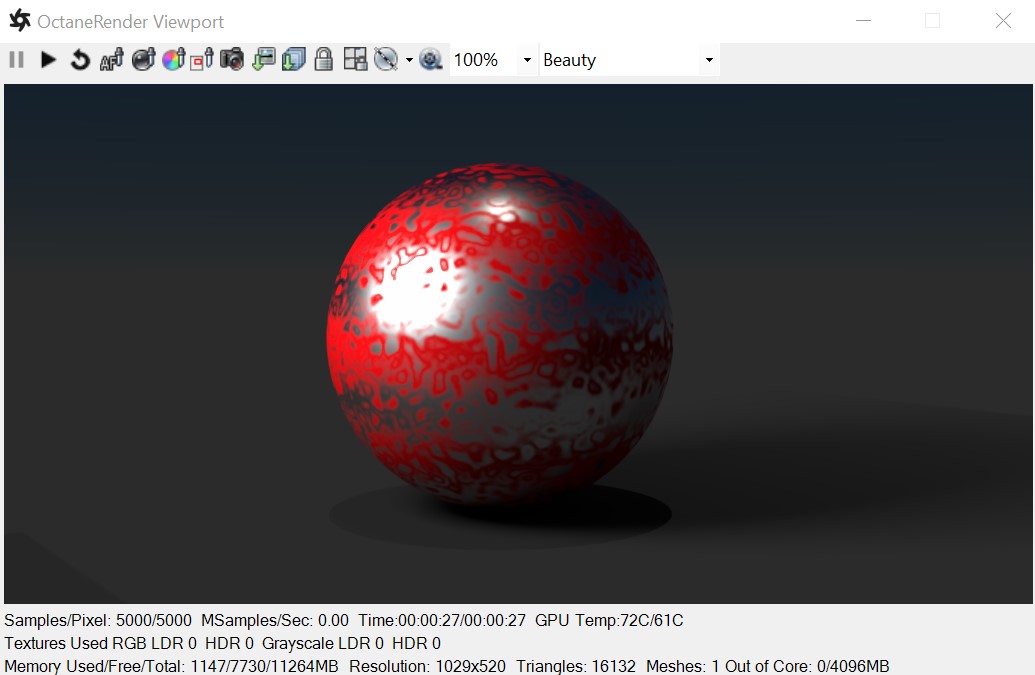
The Composite material mixes several materials using masks (figure 1). This is much cleaner than using several chained Mix materials. If a mask is not connected, the material's Opacity is used. The first MaterialThe representation of the surface or volume properties of an object. pin becomes the base layer.

Figure 1: A red DiffuseAmount of diffusion, or the reflection of light photons at different angles from an uneven or granular surface. Used for dull, non-reflecting materials or mesh emitters. and Glossy materialUsed for shiny materials such as plastics or metals. are blended using the Composite material with a Marble Texture as a mask.
Displacement for the Composite Material surface.
Material
The Material input. When several MaterialsA set of attributes or parameters that describe surface characteristics. are used, the first Material pin becomes the base layer.
Material Mask
Controls the Material’s opacity using an Input map. If a mask is not connected, the Material's opacity is used.